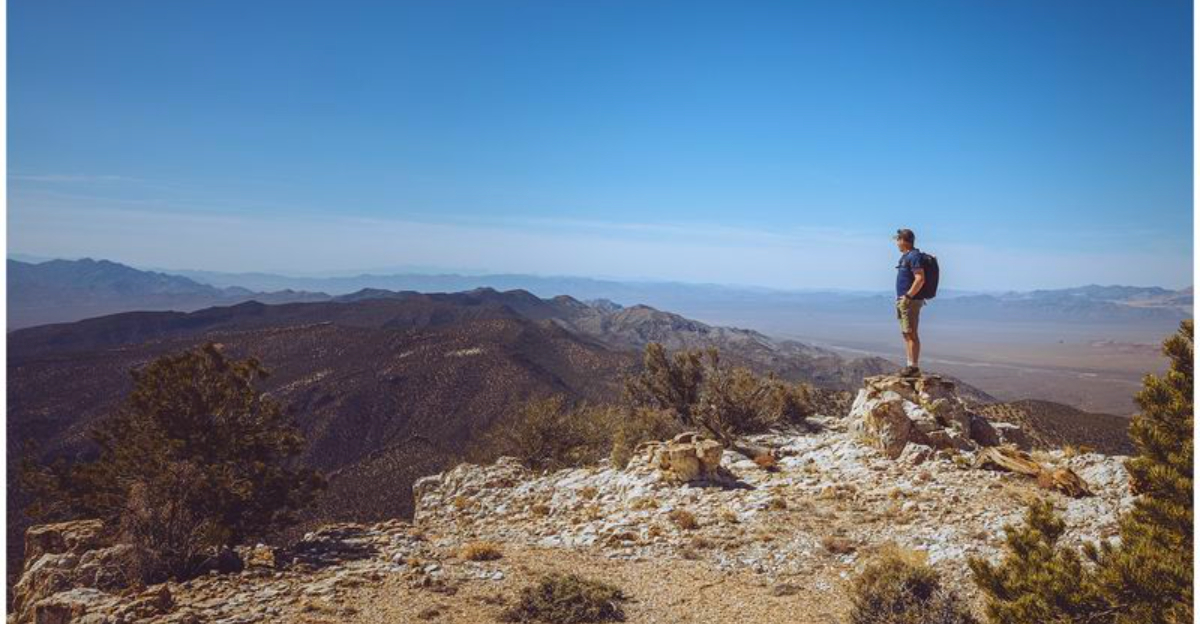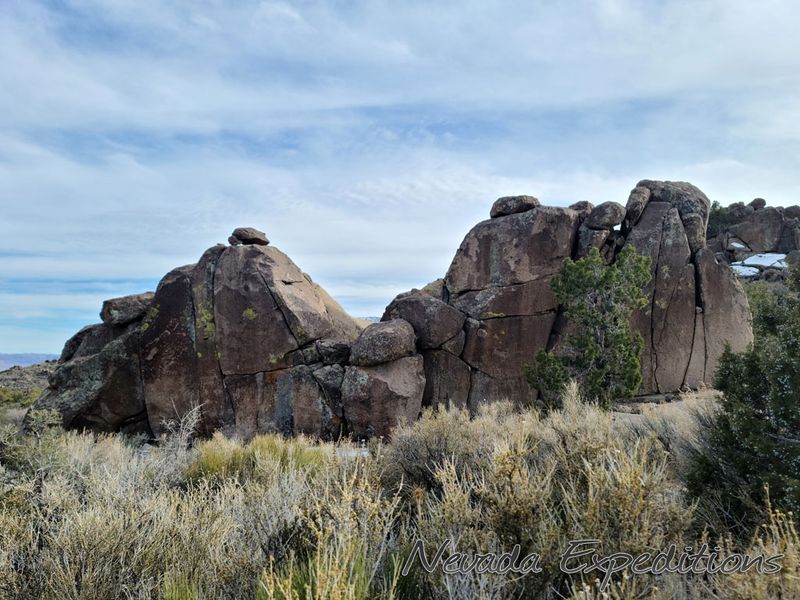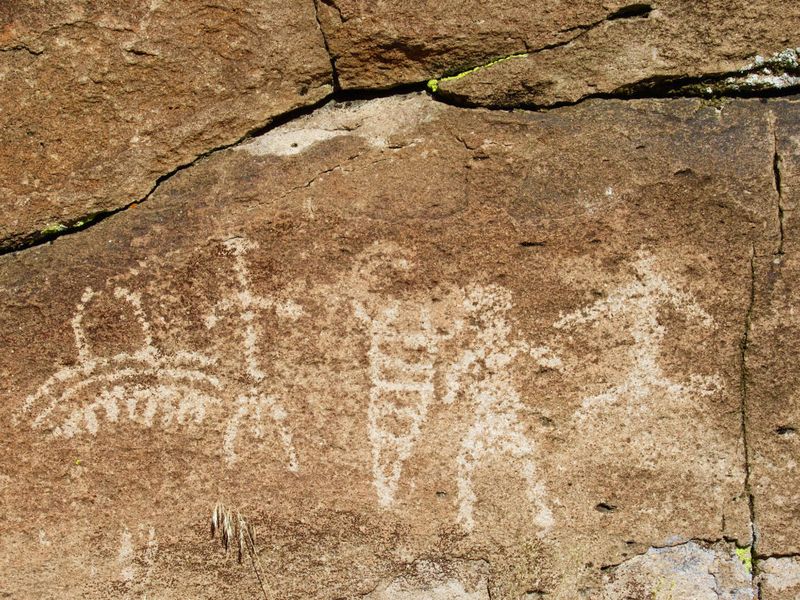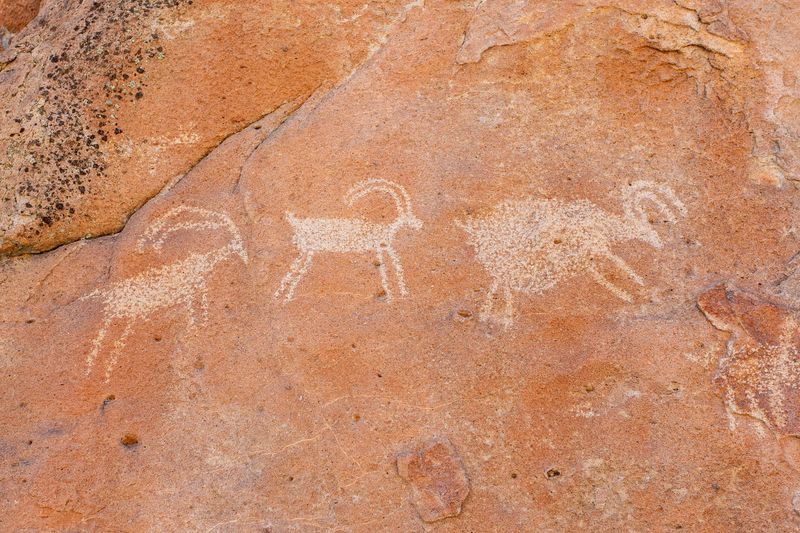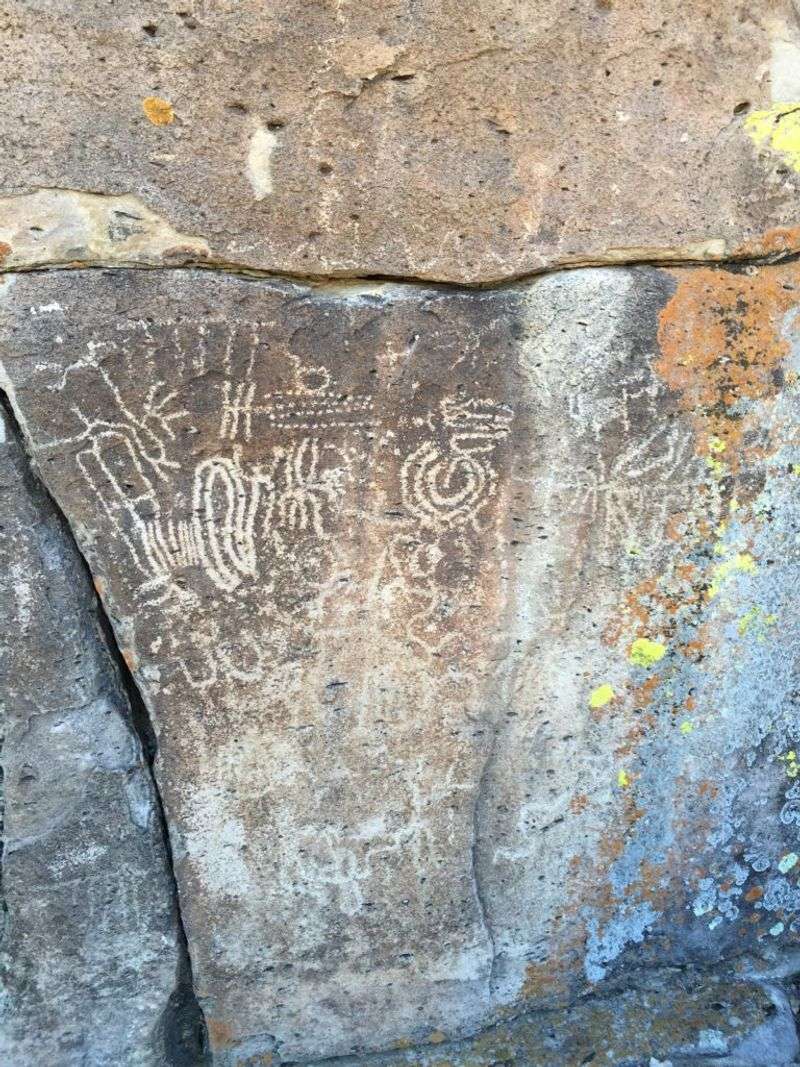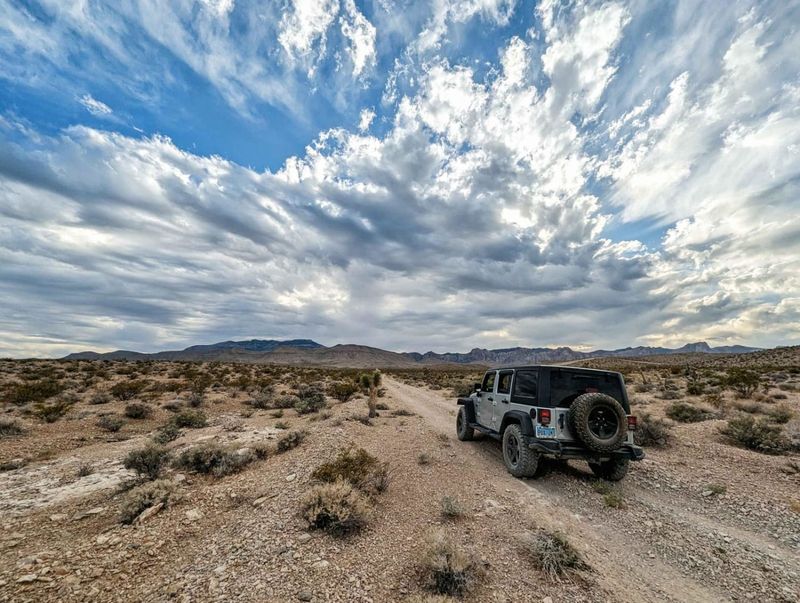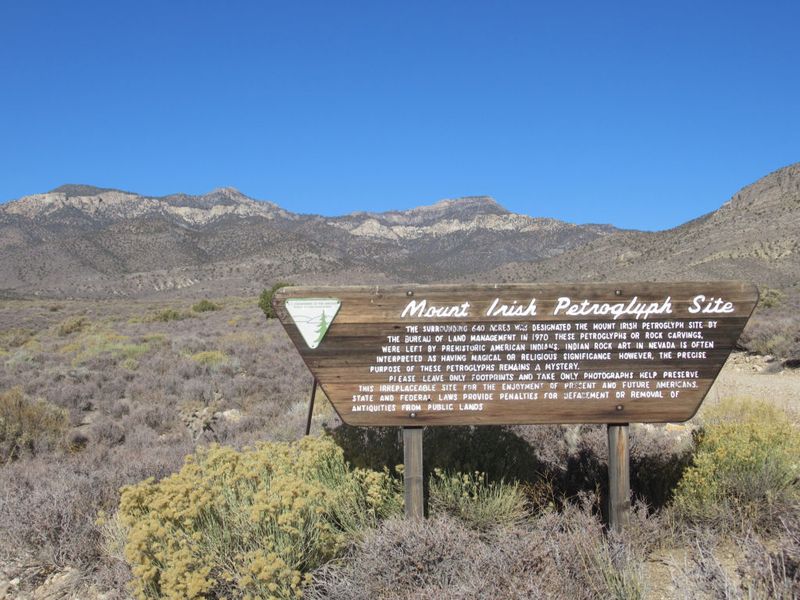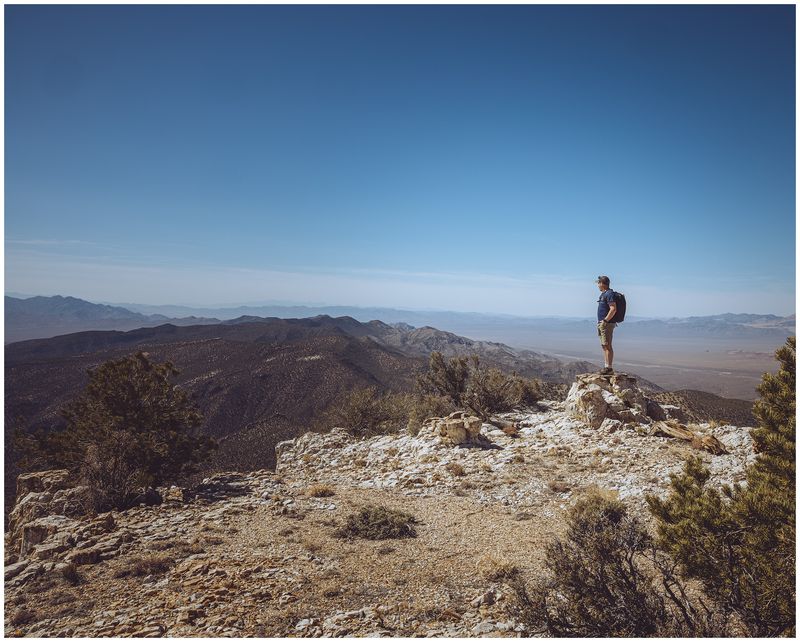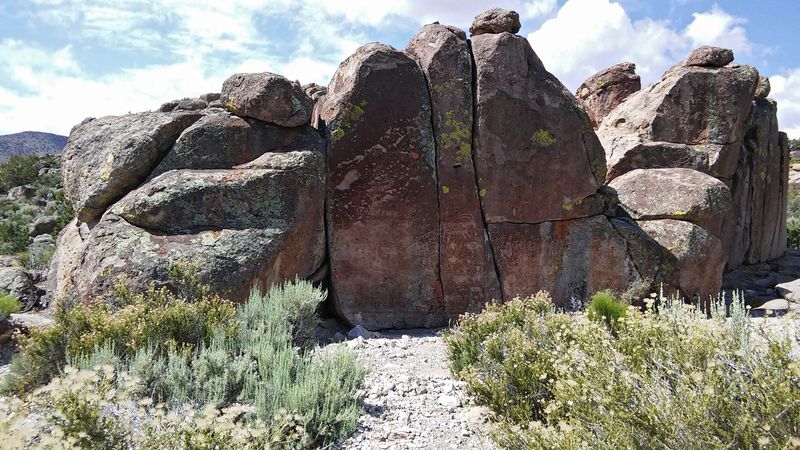Deep in the Nevada desert, ancient stories are carved into rock. The Mount Irish Archaeological District holds thousands of mysterious petroglyphs created by Indigenous peoples who lived here long before modern civilization. Walking this remote trail feels like stepping back in time, where every stone surface whispers secrets from over 3,000 years ago.
1. The Trail Lies in the Remote Mount Irish Archaeological District
Located in Lincoln County near the tiny town of Alamo, this archaeological treasure spans roughly 640 acres of rugged desert landscape. The Bureau of Land Management oversees this protected zone, ensuring its preservation for future generations.
As part of the Basin and Range National Monument, Mount Irish contains one of Nevada’s largest and most varied rock art collections. The isolation has helped protect these ancient carvings from vandalism and weather damage over millennia.
Getting here requires commitment—the roads are unpaved and challenging. But that remoteness is exactly what makes this site feel so authentic and untouched by modern life.
2. Petroglyphs Here Date Back Up to 3,000–4,000 Years
Imagine carving images into stone around 1000 BCE—that’s how old some of these petroglyphs are. Archaeologists believe ancient Indigenous peoples, likely ancestors of the Southern Paiute and Pahranagat tribes, created these enduring artworks.
Dating rock art presents unique challenges since you can’t use radiocarbon testing directly on stone. Instead, experts examine erosion patterns and compare artistic styles with other documented sites across the region.
Some carvings appear much newer, created between 500 and 1500 CE. This wide timeline suggests Mount Irish served as a culturally significant location for thousands of years, drawing generations of people to its rocky slopes.
3. The Western Locus Trail Is the Most Popular Way to See the Art
For first-time visitors, the Western Locus offers the perfect introduction to Mount Irish’s wonders. This half-mile loop meanders through classic high desert terrain where petroglyphs cluster densely on boulder surfaces.
Trail markers help guide your journey, though the path itself can fade in places. That slight uncertainty adds an element of adventure—you’re not walking a manicured park trail but exploring genuine wilderness.
Sagebrush brushes your legs as you navigate between rocks, each turn potentially revealing another ancient carving. The short distance makes it accessible for most fitness levels while still delivering an authentic desert hiking experience.
4. The Rock Art Tells Ancient Stories
Bighorn sheep dominate many panels, their distinctive curved horns instantly recognizable even after millennia. Human figures stand frozen in time—stick-like forms with rectangular bodies and arms stretched wide in mysterious gestures.
Spirals swirl across stone surfaces alongside grids and geometric designs. Archaeologists call this distinctive artistic approach the Pahranagat style, characterized especially by those large mask-like human forms.
What did these images mean to their creators? Theories range from spiritual representations to clan symbols, from migration records to hunting chronicles. The true meanings remain locked in the past, making each viewing a personal interpretation.
5. The Hike Is Short but Remote — Come Prepared
Don’t let the brief trail distance fool you—reaching Mount Irish demands serious preparation. Gravel and dirt roads leading to the site can be rough, sometimes washed out completely after desert storms.
A high-clearance vehicle is strongly recommended, and four-wheel drive becomes essential during wet conditions. Once you arrive, you’ll find absolutely no facilities, water sources, or shade structures.
Pack more water than you think necessary—desert heat is unforgiving. Sturdy hiking shoes protect your feet from sharp rocks, and sun protection is mandatory. This isn’t a casual drive-up attraction but a genuine backcountry adventure.
6. The Area Is Open Year-Round and Free to Visit
Here’s wonderful news for budget-conscious travelers: Mount Irish charges no entrance fees and welcomes visitors every day of the year. The Bureau of Land Management maintains the site and asks only for respectful behavior in return.
Look but don’t touch—that’s the golden rule. Never trace carvings with chalk or your fingers, as oils from skin gradually damage ancient rock surfaces. Photography is encouraged, but physical contact isn’t.
Camping is permitted in designated pull-off areas near the site. Spending a night under Nevada’s star-filled sky, surrounded by thousands of years of human history, creates an unforgettable experience that no hotel can match.
7. You’ll Find Silence, Solitude, and Ancient Mystery
Crowds? Not here. Mount Irish’s remote location keeps visitor numbers low, meaning you might explore for hours without encountering another soul. Just you, the whisper of desert wind, and voices from millennia past.
Time feels suspended in this landscape. Modern concerns fade as you contemplate the hands that pecked these images into stone, the eyes that viewed these same rock formations long before yours.
Every boulder could hide another story, another glimpse into lives lived completely differently from our own. The silence isn’t empty—it’s full of questions, wonder, and connection to humanity’s deep past.
8. Nearby Attractions Worth Visiting
Why stop at Mount Irish when this region offers so much more? Echo Rock, within the same archaeological district, presents additional petroglyph panels waiting to be discovered by curious explorers.
The Pahranagat National Wildlife Refuge provides a striking contrast—desert lakes attracting countless bird species, perfect for wildlife photography and peaceful observation. Water in the desert always feels miraculous.
Basin and Range National Monument encompasses vast wilderness ideal for extended hiking, world-class stargazing, and landscape photography. Plan extra days to truly appreciate this corner of Nevada’s remarkable desert heritage and natural beauty.
